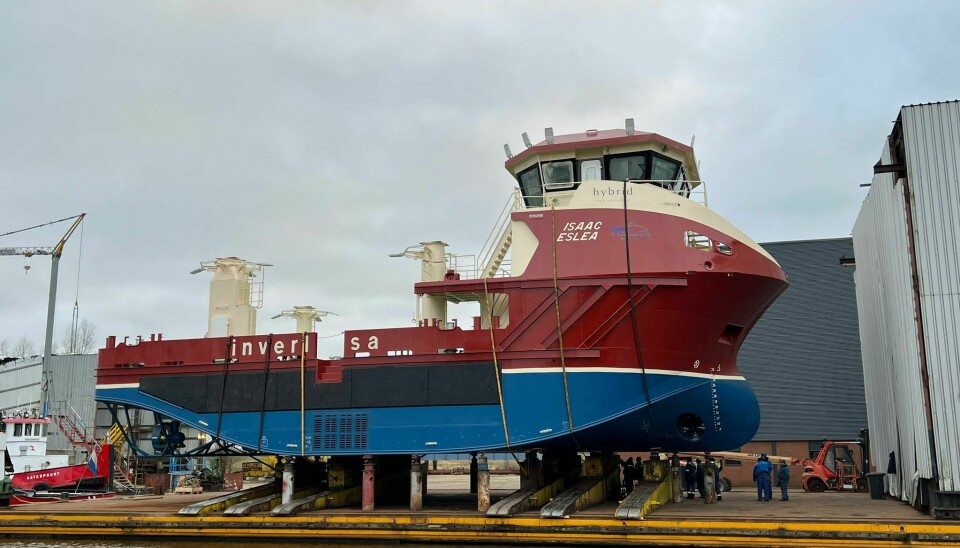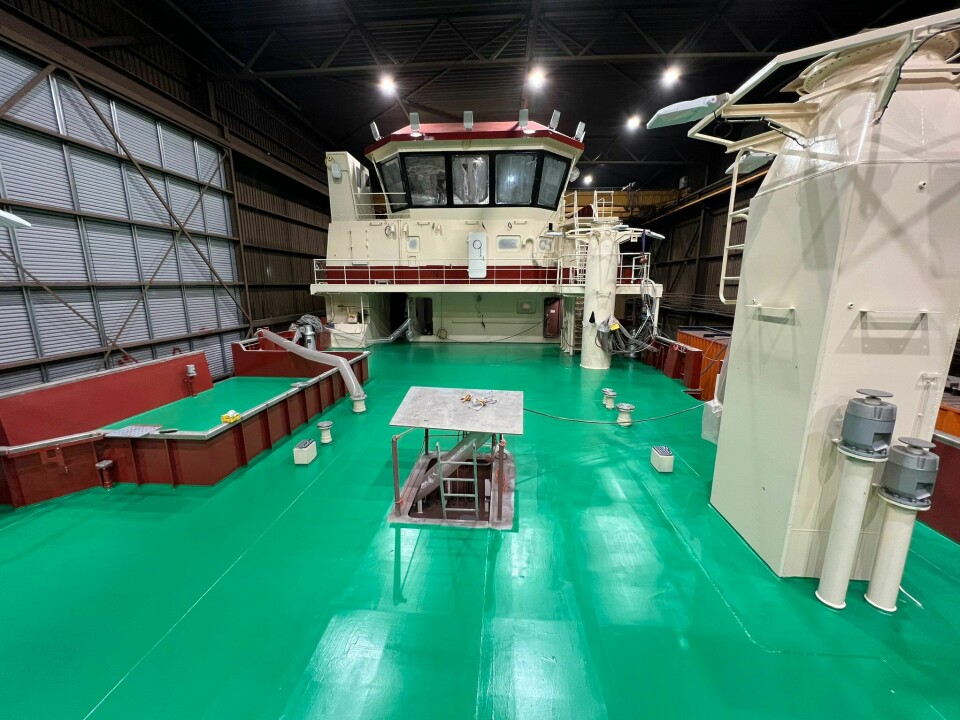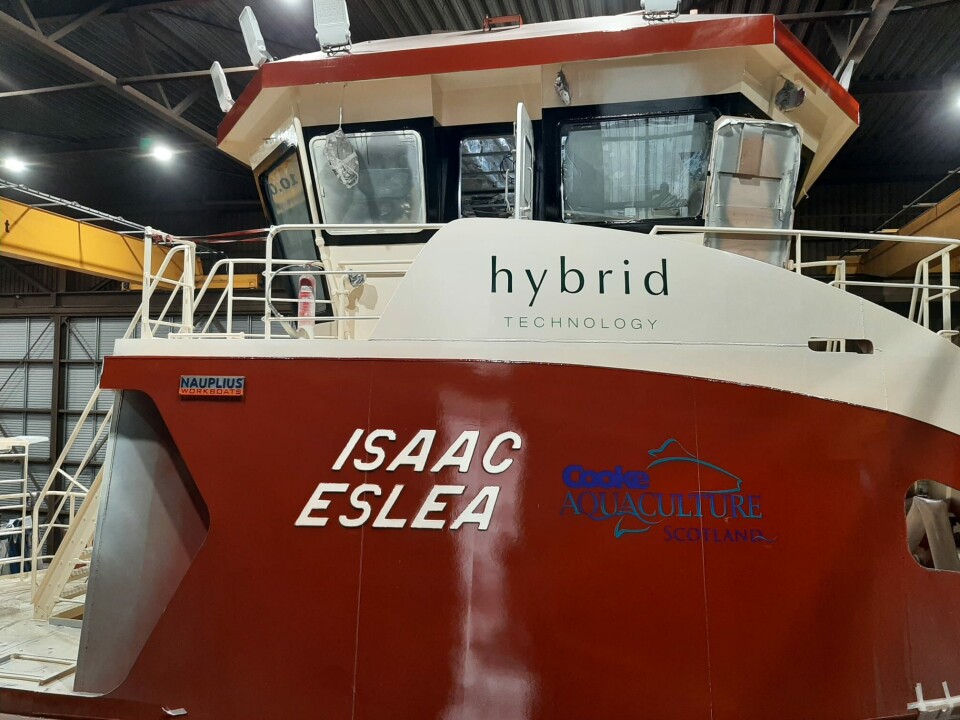
Scottish fish farming vessel makes a splash in the Netherlands
Inverlussa’s hybrid-power boat will carry out de-lousing for Cooke
A new vessel that will be used to treat Cooke Aquaculture Scotland’s farmed salmon for sea lice has been launched in the Netherlands.
The Isaac Eslea is being built by Nauplius Workboats for Mull-based Inverlussa Marine Services, and will be contracted to Cooke, which farms in Orkney and Shetland.
The 27-metre hybrid power boat is due to be delivered to Inverlussa next month and will then be fitted with a hydrolicer in Shetland before entering service in the summer.
It is the same hull design as another Inverlussa vessel, the Eloise Eslea, although there are differences. The Eloise Eslea, which is under contract to Scottish Sea Farms, uses a thermolicer to remove lice from salmon and has a shelter deck which is absent from the Isaac Eslea.
Both vessels have diesel electric propulsion and a 400 kWh battery hybrid system to lower fuel consumption and emissions during standby or overnight, and both have dynamic positioning (DP) which enables the vessels to remain on station in sea conditions that would force other boats to leave the cage edge.

The arrival of the vessel takes Inverlussa’s fleet to 20.
Cooke has already had positive experiences of hybrid systems with feed barges. The Canadian-owned company, which harvests around 27,000 gutted weight tonnes of salmon annually, ordered its first retrofit hybrid power system for a feed barge last August after the successful operation of a purpose-built hybrid barge delivered to its Mill Bay site off Stronsay in April.
The retrofit system, for a barge at Cooke’s Vestness certified organic site off Papa Westray in Orkney, was from Norwegian company Fjord Maritime, which supplied the hybrid power system for the Stronsay barge.
The Stronsay barge – a 200-tonne-capacity SeaMate built by Inverness-based Gael Force Group - had been using a generator for approximately four hours a day, reducing fuel consumption by 57%.
Hybrid power systems use excess electricity from diesel generators to charge batteries that can be used to run systems such as lighting and heating, enabling ship generators to be turned off at night or in port. This reduces noise, emissions, and fuel costs.
Watch the launch of the Isaac Eslea here.

























































